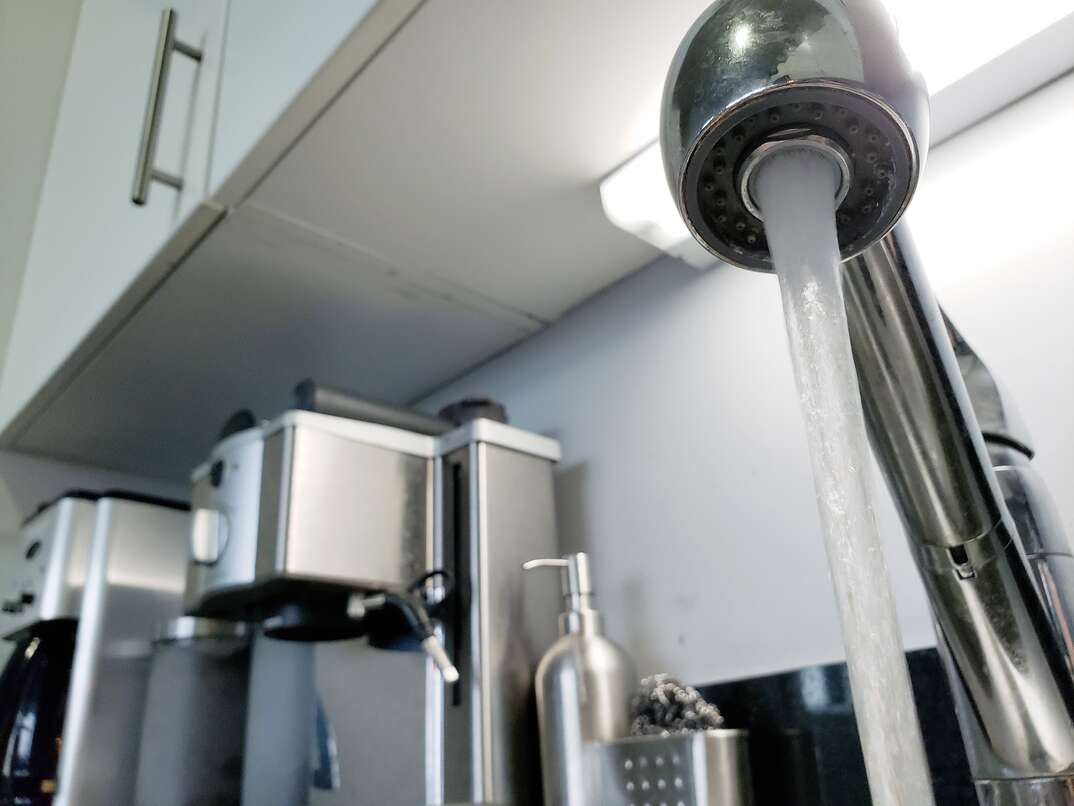Why Are My Faucets Making a Whining Noise?

If you’re not a trained expert, your home’s plumbing system can be pretty mysterious. The delicate interplay of gravity, pressure and water is complicated, to say the least. One of the more common — but, let’s face it, annoying — plumbing issues is a high-pitched squeal emanating from your water faucet. It’s one of those impossible-to-ignore noises that's irritating and can cause a good deal of worry for any homeowner.
Read More Home Improvement Articles
So, what causes a water faucet to make that unmistakable squealing noise? And more importantly, how do you solve the problem? Here are some of the most common causes of a whining faucet and their solutions.
Washer Issues
A washer that is too loose or the wrong size can cause a faucet to make a whining or squealing noise. The noise happens when the water flow pushes past the washer, which makes it rapidly flap in the stream of water. This rapid fluttering of the washer creates a vibration that can sound like a horn. To solve the problem, shut off the faucet’s water supply. Then, inspect the faucet’s washer. Depending on the issue, either reseat it or replace it with the correct size.
High Water Pressure
Another common cause of a noisy faucet is high water pressure. If this is your issue, you might hear a whining or squealing noise accompanied by a banging or hammering noise coming from the pipes when you turn off the faucet.
Keep in mind that the water pressure in your home shouldn’t be any higher than 80 pounds per square inch (PSI). If your water pressure exceeds this, water forces itself through the spout at a faster rate than the faucet is designed to withstand. Additionally, high water pressure can cause debris like rust and minerals to dislodge and eventually cause a clog. At that point, you’ll likely have to replace the pipes themselves. To keep this from happening, maintain your water pressure between 40 and 60 PSI.
To reduce your water pressure, you will need to adjust your water pressure regulator. These are commonly installed near your water meter, or near the water supply line valve. If you don’t already have one, you should plan to install one. Although it’s a fairly simple installation, it’s one that should be saved for a licensed plumber.
Water pressure regulators are adjusted via a screw and a locking nut system. To adjust the pressure, use a wrench to loosen the locking nut and then use a screwdriver to turn the screw. Turning the screw counter-clockwise will decrease the water pressure in your house.
More Related Articles:
- Calling a Plumber? Here Are the 6 Most Common Plumbing Jobs and How Much They Cost
- 6 Ways to Try to Unclog Your Sink Before You Call a Plumber
- What's in My Plumber's Van?
- Here's How Much It Costs to Remodel a Bathroom
- 6 Tips for Hiring a Plumber
Water Pipe Brackets
Sometimes, noticing when your faucet whines can help you better diagnose your issue. For instance, if your faucet only makes a squealing noise when you’re using hot water, it’s likely that there’s an issue with your hot water pipe support brackets.
When hot water flows through the pipes, the temperature increase causes the pipes to expand and stretch against their support brackets. When this happens, it tends to make a short, but loud, high-pitched sound. To solve the problem, you’ll want to replace the pipe’s supports and brackets.
Broken Faucet Stem
A worn-out or broken faucet stem is another common reason for a whining faucet. The stem is the part of the faucet assembly that houses the valve responsible for turning the water on and off. If you’re hearing that high-pitch screaming noise, it could be that the threads of the stem are rubbing against the threads of the faucet.
If you’re able, disassemble the stem and apply petroleum jelly to the threads. This will work to keep the threads adequately lubricated to keep them from binding, making the noise subside. That said, lubricating your threads is really only a temporary solution. If the threads are worn out, you should really seek to replace your faucet stem completely.
Elocal Editorial Content is for educational and entertainment purposes only. Editorial Content should not be used as a substitute for advice from a licensed professional in your state reviewing your issue. Systems, equipment, issues and circumstances vary. Follow the manufacturer's safety precautions. The opinions, beliefs and viewpoints expressed by the eLocal Editorial Team and other third-party content providers do not necessarily reflect the opinions, beliefs and viewpoints of eLocal or its affiliate companies. Use of the Blog is subject to the
Website Terms and Conditions.The eLocal Editorial Team operates independently of eLocal USA's marketing and sales decisions.



